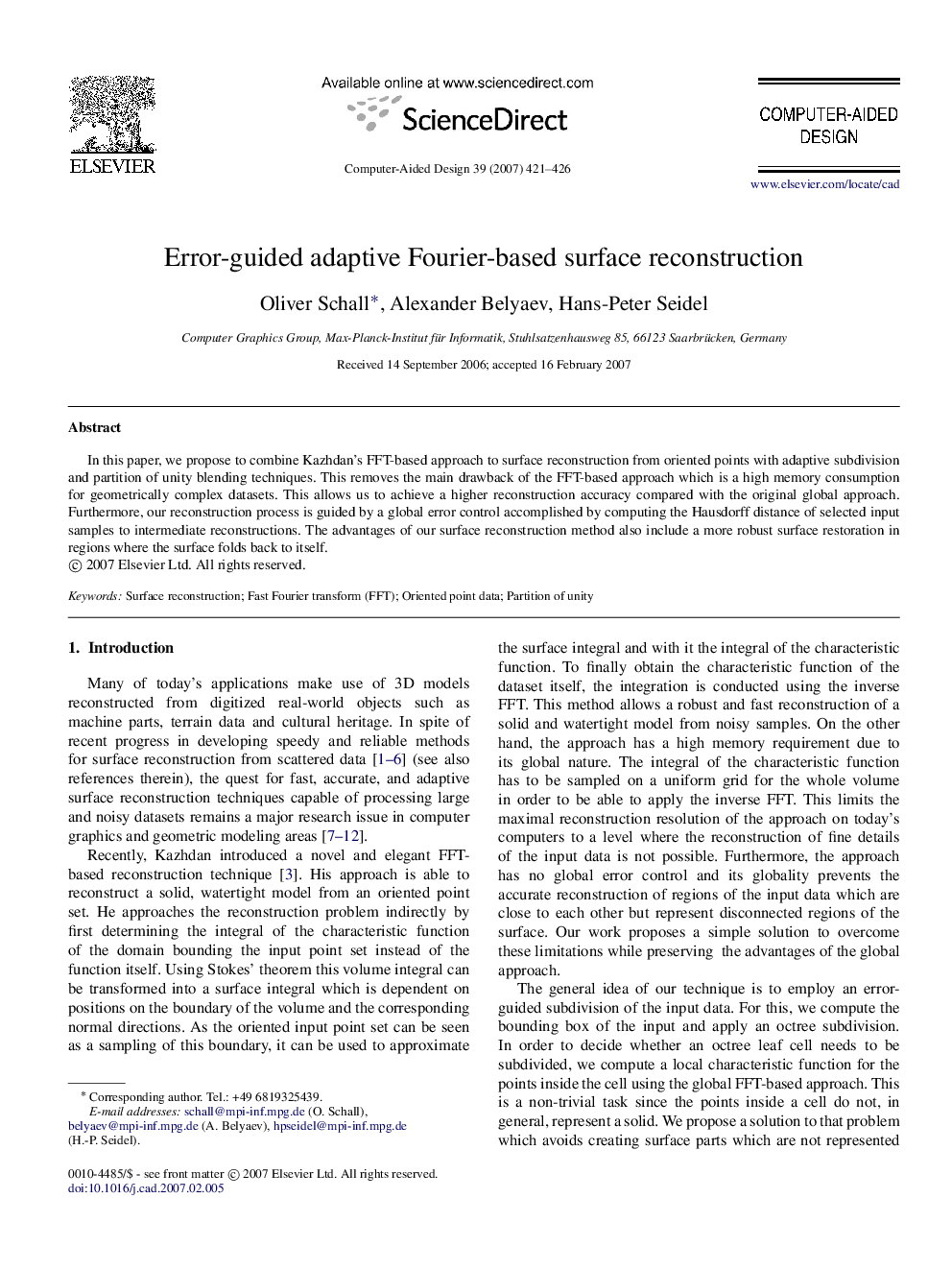| Article ID | Journal | Published Year | Pages | File Type |
|---|---|---|---|---|
| 439813 | Computer-Aided Design | 2007 | 6 Pages |
Abstract
In this paper, we propose to combine Kazhdan’s FFT-based approach to surface reconstruction from oriented points with adaptive subdivision and partition of unity blending techniques. This removes the main drawback of the FFT-based approach which is a high memory consumption for geometrically complex datasets. This allows us to achieve a higher reconstruction accuracy compared with the original global approach. Furthermore, our reconstruction process is guided by a global error control accomplished by computing the Hausdorff distance of selected input samples to intermediate reconstructions. The advantages of our surface reconstruction method also include a more robust surface restoration in regions where the surface folds back to itself.
Related Topics
Physical Sciences and Engineering
Computer Science
Computer Graphics and Computer-Aided Design
Authors
Oliver Schall, Alexander Belyaev, Hans-Peter Seidel,
